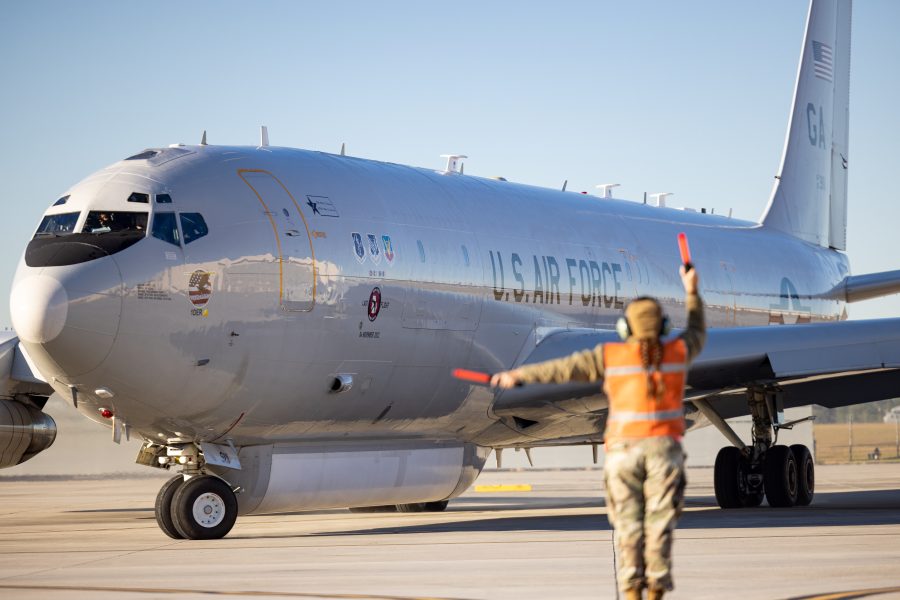Editor’s Note: This story was updated Nov. 20 to correctly identify Robins Air Force Base, Ga., as the base from which the last E-8 departed.
It’s official: JSTARS is finished flying for the Air Force.
The final E-8C Joint Surveillance Target Attack Radar System aircraft left Robins Air Force Base, Ga., on Nov. 15, a spokesperson for the 116th Air Control Wing confirmed to Air & Space Forces Magazine.
The airframe first entered USAF service in 1991, rushed into duty while still in development, to assist in Operation Desert Storm. Over the next 32 years, the fleet conducted some 14,000 operational sorties, racking up more than 141,000 flying hours in support of every geographic combatant command.
JSTARS played a key role during the Global War on Terror and flew missions over Eastern Europe in the run-up and immediate aftermath of Russia’s 2022 invasion of Ukraine.
Air Force leaders had been planning to retire the planes for years, announcing in June 2021 their intent to cut the aircraft from Robins, which had hosted the E-8s since 1996. Facing modern integrated air defenses, the Air Force needed a more survivable means to do the moving target indicator and battle management jobs JSTARS did. One official said in 2022 that operating JSTARS in contested airspace was untenable, saying, “They’d be gone in a minute.”
The first E-8 departed Robins in February 2022. A month later, the service announced its intent to divest 12 of 16 aircraft in fiscal 2023 and 2024, and Congress expedited the move by repealing a previous law requiring the Air Force to maintain at least six E-8s. In March, the Air Force budget request revealed a plan to accelerate the divestment plan, with the entire fleet retiring in fiscal 2024, which started Oct. 1.
The E-8’s final operational sortie took place from Ramstein Air Base, Germany, on Sept. 21. Robins hosted a private farewell ceremony for alumni of the JSTARS program on Nov. 4, with more than 800 people in attendance.
According to a 116th ACW release, the final JSTARS aircraft to leave Robins flew to Kelly Field, Texas, “where it will serve as a training aircraft for future Airmen.” Other JSTARS planes have gone to the Boneyard at Davis-Monthan Air Force Base, Ariz., but one remained in Georgia to become a static display at the Museum of Aviation.
In place of its JSTARS unit, Robins is getting a Battle Management Control squadron, an E-11A Battlefield Airborne Communication Node (BACN) squadron, a Spectrum Warfare group, and support units focused on the service’s Advanced Battle Management System (ABMS). The first E-11 arrived in April.
